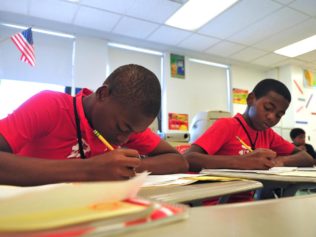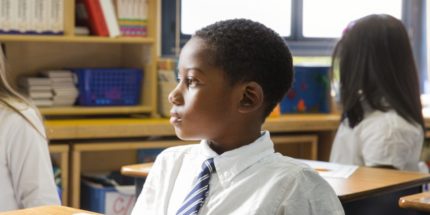I used to joke that instead of struggling to run public schools, governments ought to give parents the district’s per pupil allotment for each of their children and let families decide where to send their children to school.
Imagine my surprise when that became actual education policy, known as vouchers.
It appears that lawmakers in school districts across the nation are increasingly looking at vouchers as a solution to education woes.
In New Jersey, according to The New York Times, Republican Gov. Chris Christie has earmarked $2 million in his budget to allow low-income children to get private school vouchers. The move is an end-run around the state legislature, which has consistently defeated school voucher bills.
Other states are providing “scholarships,” which give families a lump sum to spend on schools as they see fit. Even if the recipients change school districts within the state, the scholarship money follows them.
Voucher programs, in an increasing array of incarnations, affect public education in ways that most folks who simply want the best possible education for their children haven’t thought about.
Opponents argue that diverting money away from public schools to charter programs is a double whammy for districts that have already felt the hit from state budget cuts. Supporters say these programs give children and their families options they otherwise might not be able to afford.
But public education, traditionally speaking, has been seen as the great equalizer. No matter one’s station in life, public schools were intended to be the place where anyone could learn to read, write, compute and become a solid citizen. Public schools were designed to be a place of diverse ideas. Even if someone looked like you, he might have a different background and different traditions. Public school was more like real life, where you have to learn to navigate the world with all kinds of people, not just those who share your values and sensibilities.
Years of desegregation fights, tight budgets, a struggle to keep pace with the changing needs of students beyond the ABCs have made it increasingly difficult for many school districts to realize that standard.
Fiscally beleaguered local governments are looking for ways to reduce operating costs and complaints by parents, administrators and lawmakers about the quality of education. The risk of throwing money at the problem without a focused, balanced plan, however, throws a lot of good out with the bad.
Good teachers, administrators and staff may be laid off along with those who don’t measure up as enrollment shrinks at public schools. All of those folks won’t necessarily find employment at charter and private schools. Cultural and social diversity suffers because many children who would otherwise interact early in life might not meet until well into adulthood.
Voucher programs change the rules of the game.
At first, children with special needs were given vouchers because many districts couldn’t provide the services and so those pupils were sent to appropriate settings on the government’s dime. It was cheaper, many districts argued, than training or hiring staff to address those needs. It allowed schools, it was believed, to concentrate on a core that didn’t need expensive services.
But the per pupil allotment followed those students to their new schools.
As voucher programs expanded to the general student population, parents who fell just short of the ability to afford private schools now saw a window of opportunity that previously had been closed.
It’s the balance many parents wrestle with, the need to give their children the best education in an affordable manner while wishing they were able to get it without paying additional money, on top of their tax dollars, to make that happen.
In many places, clearly, public schools have not always worked as they should, but this new escalation of voucher programs runs the risk that rather than find ways to fix the schools, governments could well abandon the attempt and leave families to navigate the education landscape alone.
Just because parents have the money, however, doesn’t guarantee their children can get into any school they want. Charter and private schools can be selective. That’s what makes them work so well. What will happen to children with undiagnosed learning challenges, with behavioral problems or whose parents simply don’t know how to lobby on their behalf?
Without a way to bring balance to education and resources, there will indeed be children left behind in districts with increasingly fewer ways to help them.
Where is the mechanism to ensure those students have an advocate who can get them into the right schools? All charter programs and private schools are not created equal and never pretend or attempt to be all things to all people. Public schools never were, either, but they created a standard that required all who came through the door be given a shot at learning successfully.
Jackie Jones, a journalist and journalism educator, is director of the career transformation firm Jones Coaching LLC and author of “Taking Care of the Business of You: 7 Days to Getting Your Career on Track.”


